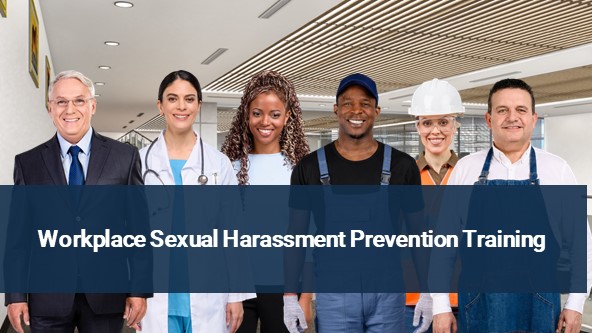A safe learning environment is crucial for the physical and emotional well-being of students, teachers, and staff. To achieve this, schools need to implement a robust Workplace Health and Safety (WHS) system. A school WHS system ensures that all necessary precautions are taken to prevent accidents, injuries, and health hazards within the school premises. By prioritizing safety, schools create an environment that fosters effective teaching and learning. In this article, we will explore the importance of implementing a robust school WHS system, the legal requirements for school effective safety training program, key components of the system.
The Importance of a Safe Learning Environment
Creating a safe learning environment is vital for the overall development and success of students. When students feel safe and secure, they are more likely to engage in learning activities and explore their potential. A safe environment promotes positive mental health, reduces stress levels, and enhances overall well-being. It also instills confidence in parents, knowing that their children are protected while at school. Moreover, a safe learning environment contributes to higher staff morale, as teachers and staff feel valued and supported. Implementing a robust school WHS system is, therefore, essential to ensure the well-being of everyone in the school community.
Understanding the Legal Requirements for School Safety
Schools have a legal obligation to provide a safe environment for students, teachers, and staff. Failure to meet these obligations can lead to legal consequences and damage the reputation of the institution. It is crucial for schools to familiarize themselves with the specific laws and regulations related to workplace health and safety in their jurisdiction. These laws typically cover areas such as risk assessment, hazard identification, emergency response procedures, and staff training. By understanding and complying with these legal requirements, schools can demonstrate their commitment to safety and avoid potential legal issues.
Benefits of Implementing a Robust School WHS System
Implementing a robust school WHS system offers numerous benefits for the entire school community. Firstly, it minimizes the risk of accidents, injuries, and illnesses, creating a safer environment for students, teachers, and staff. This leads to reduced absenteeism and ensures uninterrupted learning and teaching. A strong WHS system also helps schools maintain a positive reputation, attracting more students and parents who prioritize safety. Furthermore, by proactively managing safety, schools can save on insurance costs and avoid potential litigation expenses. Overall, a robust school WHS system not only protects the well-being of individuals but also contributes to the smooth functioning and success of the institution.
Key Components of a School WHS System
A comprehensive school WHS system consists of several key components that work together to ensure safety within the school environment. These components include:
Developing a School Safety Policy
A school safety policy outlines the institution’s commitment to maintaining a safe learning environment. It establishes clear expectations, responsibilities, and procedures for all stakeholders. The policy should be regularly reviewed and updated to reflect any changes in legislation or best practices.
Training and Education for Staff and Students
Proper training and education are essential for creating awareness and understanding of safety protocols. Schools should provide regular training sessions for staff and students, covering topics such as hazard identification, emergency response, and safe work practices.
Conducting Regular Safety Inspections and Audits
Regular safety inspections and audits help identify potential hazards or areas of improvement within the school premises. These assessments should be carried out by trained professionals and should cover all aspects of the school, including classrooms, laboratories, playgrounds, and transportation facilities.
Incident Reporting and Emergency Response Procedures
Establishing clear incident reporting and emergency response procedures is crucial for handling accidents, injuries, or any other safety-related incidents effectively. Schools should have protocols in place for reporting incidents, notifying relevant authorities, and providing immediate medical attention if necessary.
Engaging the School Community in Safety Initiatives
Creating a culture of safety requires the active participation of the entire school community. Schools should promote safety initiatives, such as safety committees, safety awareness campaigns, and regular communication channels to encourage collaboration and involvement.
Resources and Tools for Managing Safety at Schools
Managing safety at schools can be facilitated through the utilization of various resources and tools. There are several organizations, government agencies, and educational institutions that provide guidelines, templates, and training materials specifically designed for school WHS systems. These resources can aid in the development and implementation of effective safety practices. Additionally, online platforms and software applications are available to assist in incident reporting, risk assessments, and safety management. Schools should explore these resources and tools to enhance their school WHS system and ensure a safe learning environment.
Conclusion
Creating a safe learning environment is of paramount importance for schools. By implementing a robust school WHS system, schools can protect the well-being of students, teachers, and staff while fulfilling their legal obligations. A comprehensive WHS system includes key components such as a school safety policy, training and education, safety inspections, incident reporting procedures, and community engagement. Successful case studies demonstrate the positive impact of implementing such systems. By utilizing available resources and tools, schools can effectively manage safety and ensure a conducive environment for teaching and learning. Prioritizing safety not only enhances the overall well-being of the school community but also contributes to the success and reputation of the institution.
To learn more about implementing a robust school WHS system and managing safety at schools, visit our website and explore our comprehensive resources and tools. Together, let’s create a safe learning environment for all.
Risk Management and WHS Training at Schools
Providing targeted WHS training specifically for the students and school leavers, will help the students to understand health and safety in the workplace. This will equip the students with the knowledge of their rights and responsibilities, as well as giving them the information on how to identify the risks, report, be part of consultation process and control the workplace hazards.
If you would like us to facilitate an interactive and fun WHS training within your school, do not hesitate to contact us.
What is the purpose of a good health and safety training program?
You may require a professional health and safety consultant for your school.
Training programs should include the features described here, regardless of who provides them.
Would you like information or effective school safety training program?
Providing information and providing effective school safety training program are two separate things.
- Information serves as a means of raising awareness – it provides general introductory knowledge of a particular area.
- As a result of a school safety training program, an individual learns new skills and knowledge that will result in a change in workplace behavior – for example, a new method of undertaking a task.
Both the trainer and the student will engage in two-way communication during a training session – you will listen, perform, think, ask questions, and provide explanations to each other.
An effective safety training program involves more than simply sitting in a room and listening to a speaker.
What does effective safety training involve?
To ensure that safety training is effective, a variety of techniques is used in order to encourage participants to participate actively in the process. A training session includes:
- Detailed explanation
- Providing examples
- Providing opportunities for practice
- Asking people questions about their learning
- Affirming people’s performance with feedback
- Encourage people to ask questions
- Considering the individual’s English language and literacy levels, as well as his or her cultural background
- Promoting self-assessment among employees
- The review process
- A follow-up at a later date to determine whether any learning has occurred and whether any changes have occurred in behavior
You have the right to expect all of these things when participating in an effective safety training program.
Are there any specific knowledge and experience that a health and safety trainer should possess?
Trainers in health and safety are expected to have a thorough understanding and experience of the following:
- Regulations, standards, and codes of practice applicable to your industry and the relevant health and safety legislation in your State or Territory
- Training in health and safety should incorporate hazard identification, risk assessment, and risk control strategies
- Modern approaches to occupational health and safety management
- Industry-specific health and safety issues
- Training and assessment based on competency
- The ability to train and assess adults – in particular, how to encourage them to learn and how to use a variety of techniques to train them
It is important for and effective safety trainers to recognise that learners have different learning styles and levels of experience and knowledge when they come to training.
Our specialised trainers are offering online, elearning, onsite, and Public classes on WHS for managers and supervisors and WHS Committee. We can also customise our health and safety courses to your school.
Access Work Health and Safety Books from Amazon: Work Health and Safety
Make your safety and wellbeing a priority. Contact us to start the change.















